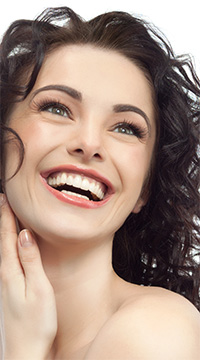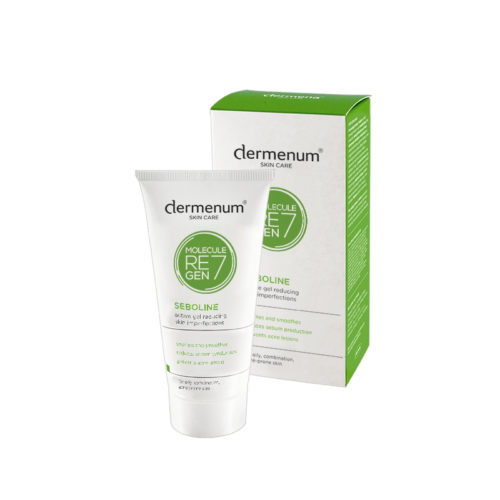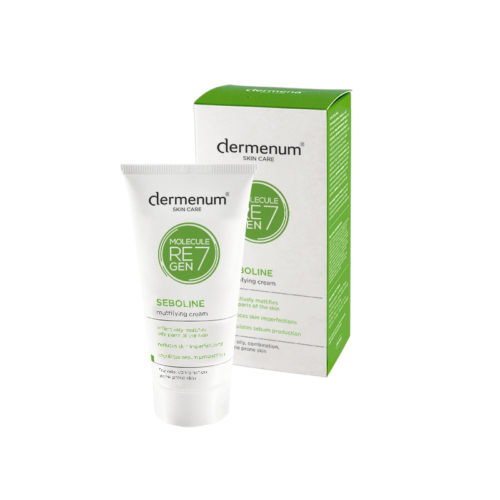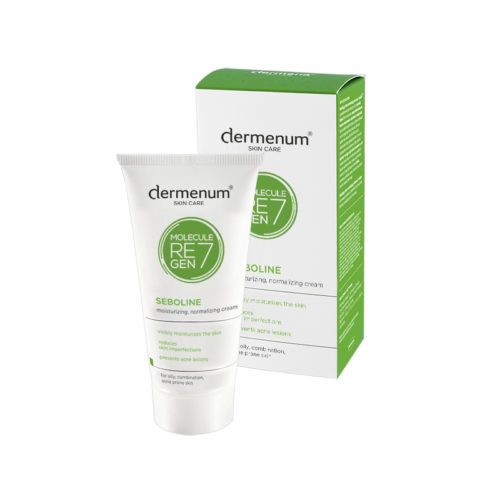Oily, acne prone skin

Acne (acne vulgaris) stands as one of the most common dermatological conditions, since according to certain data, it affects about 15% of the population. It has been estimated that nearly 85% of population between 12 and 25 years of age suffer due to acne. The peak incidence occurs between 14 and 17 years of age in case of girls, and 16 and 19 years of age in case of boys, however, the first symptoms appear much earlier - as early as in the age of 10-12. Acne can also occur in adults older than 25 years of age, and it may recur periodically in women.
The mechanism associated with the occurrence of acne is quite complex and is associated with a series of causes, including:
- activity of sex hormones,
- excessive sebum secretion and altered sebum contents,
- infection caused by Propionibacterium acnes bacteria,
- disorders associated with keratosis of the skin surrounding hair follicles,
- excessive keratosis of ducts in the sebaceous glands,
- clogged sebaceous follicle exits
- inflammatory condition surrounding sebaceous glands.
This issue is associated with a certain number of myths. The prevalence of acne is not associated with bad diet, namely fatty meals, excessive intake of carbohydrates, chocolate or dairy products. Drinking large amounts of water will not help us eliminate the problem. Contrary to common beliefs exposure to sun rays is not a good method of treatment - suntan only covers acne lesions to a certain extent. Increased exfoliation of the tanned skin can partially open clogged sebaceous ducts, nevertheless, such benefits are only short-term results.
Mechanism underlying the occurrence of acne lesions
Increased sebum secretion resulting from stimulation of sebaceous glands (mainly due to androgen hormones), as well as disorders related with keratosis in hair follicles result in clogged pores. This leads to a situation, where sebum evacuation becomes impaired and sebaceous ducts begin to dilate.
The above-mentioned processes lead to the occurrence of micro-blackheads. Along with the dilation of sebaceous ducts, we can observe the occurrence of closed comedones (whiteheads). As a result of oxidizing the fat present in the sebum they become more visible and gain the form of black spots - open comedones (blackheads).
Clogged hair follicles are characterised by anaerobic conditions, which result in the accumulation of compact sebum. This supports the development of Propionibacterium acnes bacteria - commensal bacteria, constituting a part of normal bacterial flora of the skin, present also in healthy people. these anaerobic bacteria cause sebum breakdown along the enzymatic route, as they hydrolyze triglycerides and release free fatty acids, as well as chemotactic factors. Free fatty acids are known for their irritating properties and they intensify epidermal exfoliation. Chemotactic factors attract and inform leukocytes about the occurrence of an infection. Leukocytes, aiming to eliminate P. acnes bacteria, release hydrolytic enzymes. Unfortunately, these enzymes tend to destroy both bacterial cells, as well as cells creating the hair follicle, and this causes damage of walls within sebaceous glands. This may lead to rupture of the sebaceous gland wall and the release of hair follicle contents into the dermis. Such situation causes aggravation of the inflammatory condition, which leads to the occurrence of papulopustular lesions. When similar lesions tend to occur in multiple, neighbouring sebaceous glands, they create a large inflammatory infiltrate.
Aggravated forms of acne require pharmacological treatment, which may be both local or systemic therapy. Patients must be aware that such treatment is very long - it can last for months or even years.
Proper acne skin care and hygiene
Acne prone skin requires special attention. Apart from medical recommendations, it is also crucial to follow certain general skin care recommendations concerning acne prone skin. Do not eliminate comedones on your own. Comedones should be removed by means of special equipment and skin should be disinfected after the whole procedure. When caring for acne prone skin, it is essential to ensure its proper level of hydration by applying appropriate creams and gels. When cleansing the skin, it is essential to use special cleansing preparation anticipated for oily and acne prone skin, which do not cause irritations. For body wash it is recommended to use soap bars or special soaps. Dermocosmetics may be used individually or in combination with pharmacological treatment.
However, in many cases proper skin care and appropriate treatment make it possible to say goodbye to acne forever.
Bearing in mind all possible issues that are often experienced by people with oily, mixed and acne prone skin, we have elaborated an innovative line of skin care preparations - dermenum® seboline. These products have been created on the basis of Regen7 molecule, omega hydroxy acid and sebacic acid. Preparations from this line ensure proper and efficient care of acne prone skin, pose a positive influence on its look and condition. dermenum® seboline reduces the tendency towards the occurrence of acne lesions, regulates the work of sebaceous glands and protects against excessive development of Propionibacterium acnes bacteria. It reduces skin imperfections and at the same time ensure proper level of its hydration.
Recommended products
dermenum® SEBOLINE ANTI-IMPERFECTION ACTIVE GEL
- soothes and smoothes the skin
- regulates sebum secretion
dermenum® SEBOLINE MATTIFYING CREAM
- effectively absorbs oil from oily parts of the skin
- reduces skin imperfections
dermenum® SEBOLINE NORMALIZING MOISTURIZING CREAM
- clearly moisturises the skin
- reduces skin imperfections


